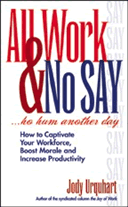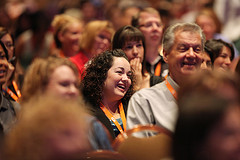Meeting Planners, Decide on Meeting Room Design
How to Decide of Proper Meeting Room Design
The following article is used with permission of PlanSoft Corporation (www.mpoint.com)
Meeting planners convention meeting Set Up
Theater? Classroom? Banquet? Conference? U-shape? Which type of meeting room setup should you use? The answer depends on the objectives of the individual function. Use the information below to help you decide which of the seven major meeting room designs will work best for each of your events.
Theater Style
Overview: Chairs are lined up in rows facing the speaker. The rows can be straight, semi-circular, or herringbone (angled toward the front of the room). If space isn't an issue, it's best to offset each row so that delegates are not sitting directly behind one another.
Best usage: When attendees take on the characteristics of an audience (i.e., listening to a speaker, watching a slide presentation), theater-style is the most efficient setup. This design is also used to maximize the seating capacity of meeting rooms or allow the audience to be as close to the speaker as possible. It is not recommended for taking notes, referring to material in binders, or any event at which food is served.
Classroom Style
Overview: Long, narrow tables are positioned in front of rows of chairs facing the speaker. The tables usually abut one another, although tables that extend beyond the stage ideally should be angled toward the speaker in order to provide better viewing. Water pitchers and glasses are typically placed on the tables.
Best usage: Classroom-style is the best setup for situations in which the presenter is expected to do most of the talking and/or delegates must take notes, refer to material in binders, or work on computer equipment. It's also the most comfortable design for very long sessions. It is not the preferred setup for encouraging conversation among attendees.
Banquet Style
Overview: Guests are seated at round tables - usually 60", 66", or 72" in diameter.
Best usage: Banquet-style is the setup of choice for most meal functions. In addition, it's appropriate for small committee meetings and small breakout or study groups involving group interaction and/or note taking.
Crescent Style
Overview: Attendees are seated at round tables - usually 60", 66", or 72" in diameter. The two or three chairs in which delegates would have their backs to the speaker are removed, thus forming a "crescent" of seating facing the speaker.
Best usage: This design works well when you need to use a room for meals and for an educational session that immediately follows. It's also appropriate for general sessions where attendees break into small discussion groups in the same room.
Conference Style
Overview: Delegates are seated on all four sides of a table. For smaller groups (16 people or less), a single conference table is typically used. For larger groups, several 6'x30" or 8'x30" tables are often combined to create a solid rectangular table.
Best usage: The conference-style setup is often used for board meetings, committee meetings, and other smaller functions at which interaction between participants is expected. This design also can be used for high-level food and beverage functions with a small number of guests.
U- Shape
Overview: Rectangular tables are positioned to form a "U." Seating is usually on the outside of the U, but it's possible to seat delegates on both inside legs of the U.
Best usage: The U-shape setup is often used for board of directors meetings, committee meetings, and breakout sessions involving audio-visual presentations because all attendees can see the AV when the screen is placed at the open end of the U. It also can be used for banquets, with seating on all sides of the U.
Hollow Rectangle
Overview: 30" wide classroom tables are arranged in a square or other multi-sided design in which the center of the design is empty.
Best usage: Larger committee or board meetings of 17 to 30 people, at which interaction among attendees is important, can benefit from the hollow rectangle design. (Note: Avoid long straight sections of tables over 12 feet long. Octagons and hexagons work well to improve sight lines among attendees.)
30th Anniversary Conferon Guide to Meeting Management, Convene, September 15, 2000.
For more information about Convene, click: http://www.pcma.org/resources/convene/
For more information about Conferon, click: http://www.conferon.com

 Jody@idoinspire.com
Jody@idoinspire.com


